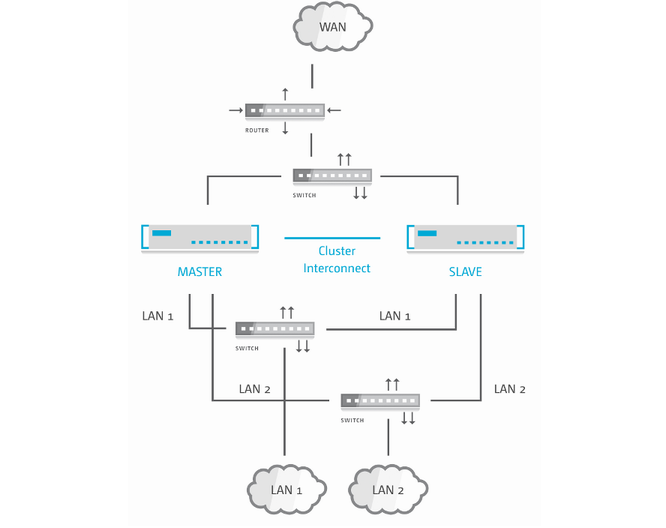The configuration dialog allows you to connect two independent LANCOM R&S®Unified Firewall systems in a master/slave configuration through a dedicated interface. The so-called HA cluster provides failover. If the master device becomes unavailable, the standby device (slave) takes over its tasks.
The master and slave systems are connected via a Cluster Interconnect cable that allows them to communicate with one another and monitor the status of the paired system. The slave node’s configuration is synced with the master node’s configuration. Certain rules are applied to the slave device, that allow network communication with the master node only. If the slave system fails to detect a "heartbeat" signal from the master, it takes over the role of the master system (in the event of a power outage or hardware failure/shutdown).
In this case, the slave device removes specific blockades and sends a gratuitous ARP request. The switch connected to your LANCOM R&S®Unified Firewall must allow the ARP command. It may take several seconds for the client device in the network to update its ARP cache and for the new master to be reachable.
The following figure illustrates a typical network environment with a redundant master/slave configuration for High Availability.

High Availability is not available for the LANCOM R&S®Unified Firewall models UF‑50 and UF‑100.
You can find more information regarding high availability in the following sections.
